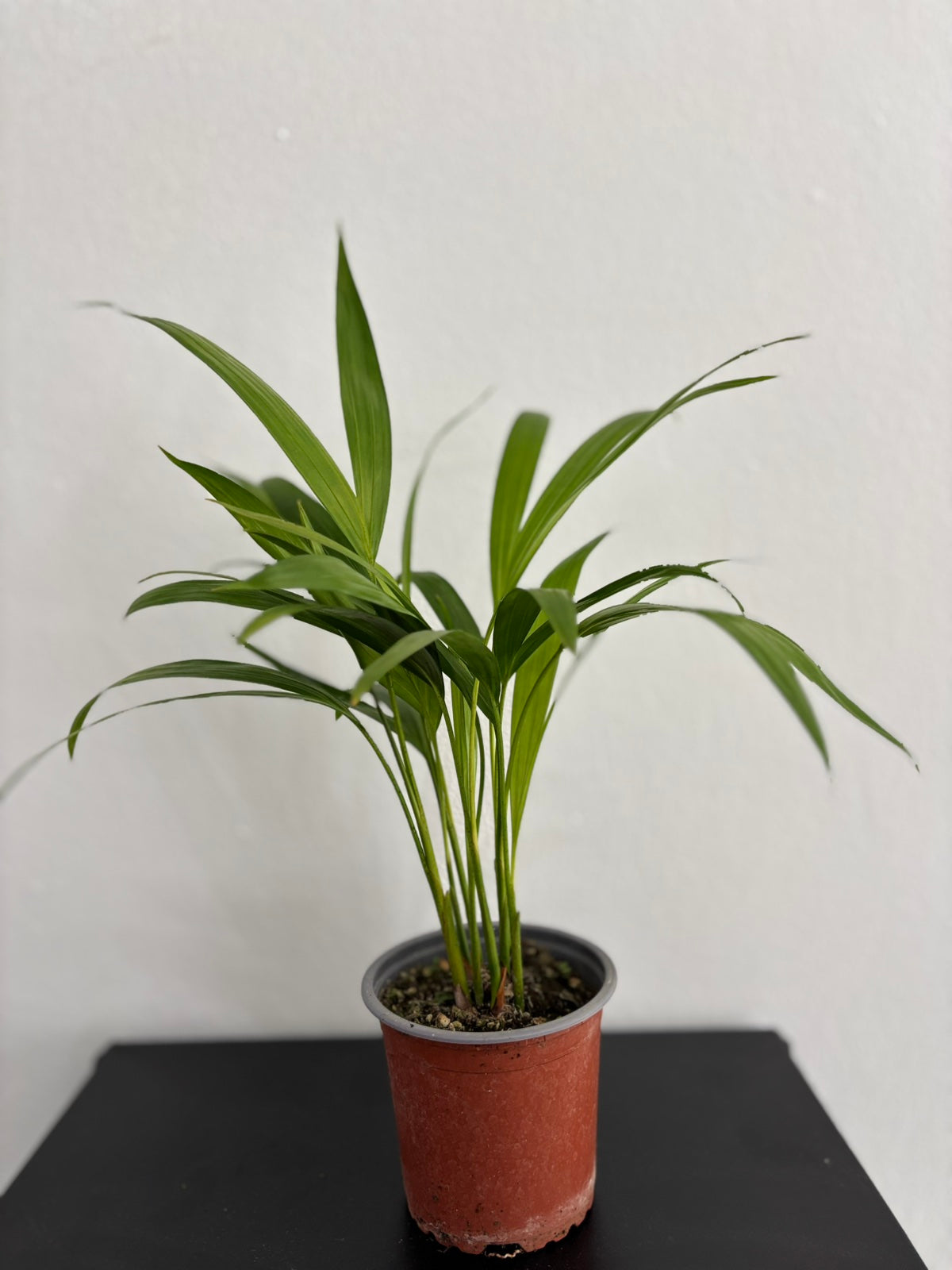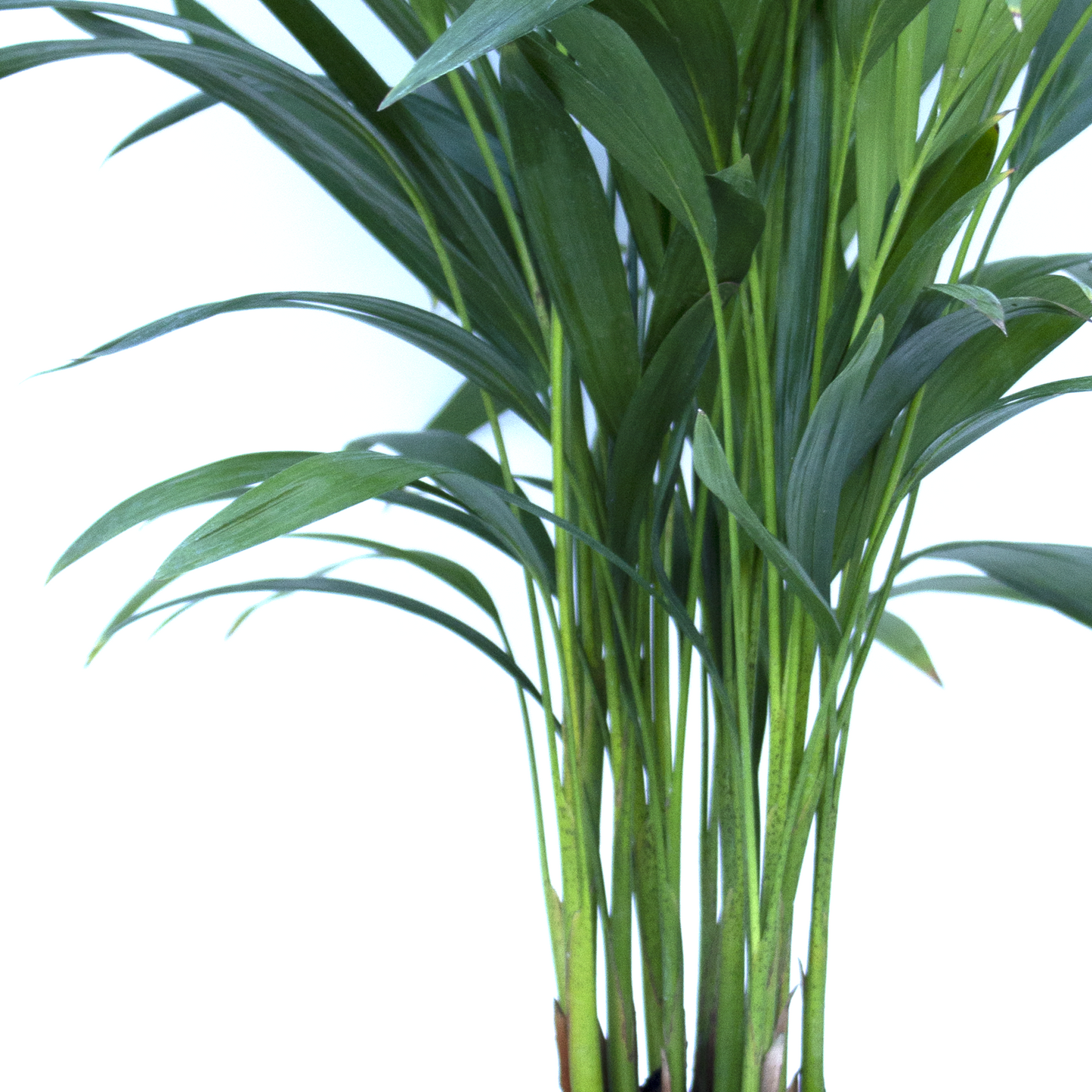cybloom
Areca Palm
Regular price
€8,50 EUR
Regular price
Sale price
€8,50 EUR
Unit price
per
Tax included.
Couldn't load pickup availability
Life Form: Tree
Family: Araceae
Origin: Comoros, Madagascar
Ease of Cultivation: Easy with small difficulties
The Size: From 1,5 to 4 m in a pot
Growth: Average
Lifespan: Perennial plant, from 3 to 8 years and more in a pot.
Temperature: In summer: the upper limit is 86 ° F, in the winter the lower limit is 59 ° F. The optimum temperature is 68-71,6 ° F.
Humidity: Increased, not less than 50%, except for spraying, it is desirable to put the pot in a tray with wet pebbles.
Lightning: Bright diffused light, east window is suitable
The Soil: Ready ground is suitable for lemons. For the soil of own preparation, take 1 part of turf ground, 1 part of coarse-grained sand or perlite, 1 part of wet peat or humus (leaf land). Requires a pot with a hole.
Watering: Abundant with soft water, 1-2 times a week, the soil should be moist all the time
Fertilizer: From spring to autumn, regularly feed once every 2-3 weeks with a soluble fertilizer for palms.
Reproduction: Root offspring, which are separated during transplantation. It is possible to propagate seeds that are soaked for 2-3 days in water at a temperature of 86 ° F, are sown in a mixture of peat and perlite and germinate under the film at a temperature of 68-77 ° F. The first sheet appears in 2-3 months.
Bloom: In the home, culture blooms extremely rarely, in the summer. Flowers – panicles of small yellow or cream flowers. Then dark violet fruits are formed.
Transfer: In the spring, once every 2-3 years. Like all palms, it does not respond well to transplantation. In large specimens, it is sufficient to change the topsoil. Requires a deep pot, because roots grow down.
Features of Care: In the summer it is desirable to take outside. Preferably several young trees planted in one pot.
Difficulties: It is affected by a spider mite and chervets. Reddish and brown spots on the leaves indicate fungal diseases and excessive moisture in the soil. The leaves turn yellow with insufficient watering, and dry tips are formed in dry air. On the leaves appear light dry spots with an excess of light, and fade and darken the leaves begin at too low a temperature




